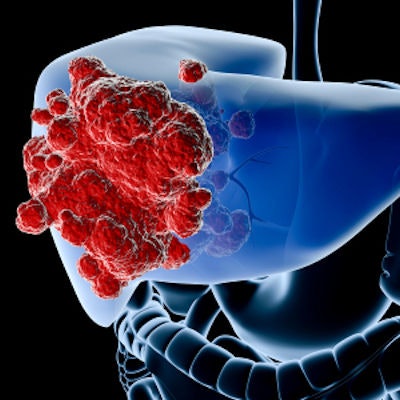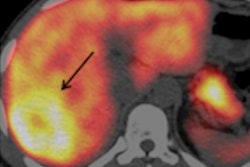
Measurements of muscle mass on preoperative CT scans can be used in liver cancer patients to help identify the presence of sarcopenia, a risk factor that's associated with worse short-term outcomes after liver resection, Italian researchers reported in a study published online on 23 September in JAMA Surgery.
In research involving over 200 patients undergoing liver resection for malignant tumors, a team led by Dr. Giammauro Berardi, PhD, of San Camillo Forlanini Hospital in Rome found that those with sarcopenia -- identified via muscle mass measurements on CT and handgrip strength tests -- had a significantly higher rate of 90-day morbidity than patients without the condition.
"Both muscle mass measurements on computed tomographic scans and muscle strength assessments with the handgrip strength test should be performed at the first clinical encounter to better classify patients and to minimize the risk of morbidity," the authors wrote.
To determine if sarcopenia was a risk factor for 90-day morbidity, the team prospectively assessed 234 consecutive patients who were undergoing liver resection for malignant tumors at San Camillo Forlanini Hospital. Of the 234 patients, 64 underwent major hepatectomies and 170 received minor hepatectomies. The most common surgical indication was hepatocellular carcinoma (101 patients) and colorectal liver metastases (96 patients).
Prior to surgery, each patient's muscle mass was quantitatively assessed on CT by calculating a skeletal mass index (SMI) on version 5.0 of the SliceOmatic image analysis software (TomoVision). In addition, every patient received a handgrip strength test to assess muscle strength.
Next, the researchers divided the patients into four groups: normal muscle mass and strength, reduced muscle strength, reduced muscle mass, and reduced muscle mass and strength. They then tracked 90-day morbidity, as well as other outcome measures such as 90-day mortality, hospital stay, and readmission rate.
| Association of preoperative sarcopenia measurements with outcomes in liver cancer patients | ||||
| Normal muscle mass and strength (78 patients) | Reduced muscle strength (13 patients) | Reduced muscle mass (75 patients) | Reduced muscle mass and strength (68 patients) | |
| 90-day morbidity | 5 (6.4%) | 3 (23.1%) | 29 (38.7%) | 35 (51.5%) |
| Mean hospital stay | 6 days | 9 days | 8 days | 10 days |
| Readmitted to hospital | 0 | 1 (7.7%) | 4 (5.3%) | 6 (8.8%) |
| 90-day mortality | 1 (1.3%) | 1 (7.7%) | 0 | 3 (4.4%) |
The differences between the group of patients with reduced muscle mass and strength and all other groups of patients were statistically significant for 90-day morbidity (p < 0.001), mean hospital stay (p < 0.001), and readmission rate (p = 0.02), but not for 90-day mortality (p = 0.13).
"When evaluating patients with sarcopenia, our data from a single center suggest that both muscle mass measurements on preoperative CT scans and muscle strength assessments with the handgrip strength test should be obtained at the first clinical encounter to better classify patients and to minimize the risk of morbidity," Berardi and colleagues wrote. "In addition, the inclusion of sarcopenia evaluation in routine clinical practice may be beneficial to address patient informed consent and to correct adverse preoperative conditions if possible."
Further research is now needed to evaluate the observed association between sarcopenia modification and postoperative outcomes, according to the researchers.



















